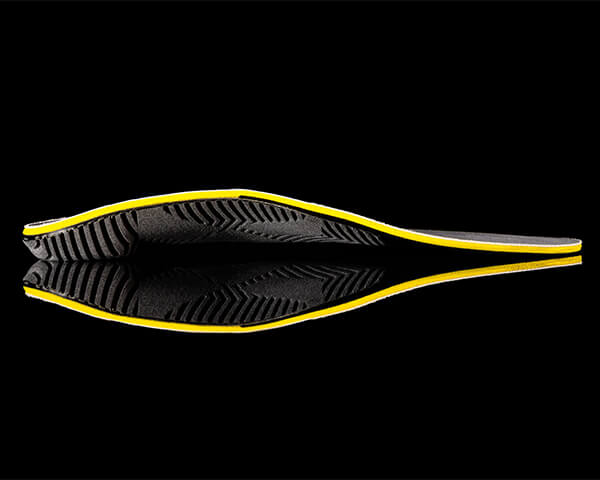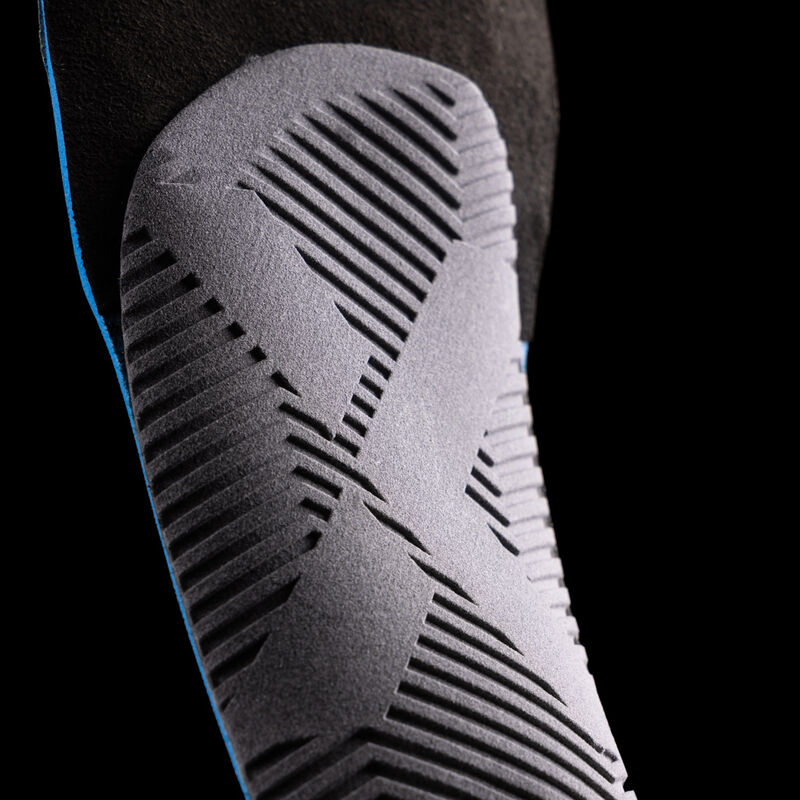4 Reasons 3D Printing Makes the Best Insoles

3D printing makes better custom insoles than traditional methods for relieving your foot pain.
When you need the best arch support insoles for your feet, 3D printing may be just the right technology you need. Created precisely to your measurements by top-of-the-line 3D printers, they’ll fit and feel a lot better.
Custom insoles have traditionally been made by hand—a process held back by mistakes, inconsistencies and waste. But now 3D printing is more accurate and effective at creating custom insoles that fit your feet exactly.
This technology has matured to a level to give you amazing benefits for your feet. What advantages will you get out of it?
4 Reasons 3D Printing Makes the Best Insoles
Can older methods of making shoe insoles give decent results? Yes, we’ve used them for decades. But compared to hand-making orthotics, 3D printing has greatly improved the process. Let’s see how.
1. Eliminates Human Error
To understand what a great improvement 3D printing gives us, let’s think about the old, traditional process:
- Casting: The clinician makes a cast of your foot out of plaster. This shrinks as it dries out, making it smaller than your actual foot, which technicians try to compensate for.
- Duplicating the Foot: A technician pours plaster into this cast, waits for it to harden, and then breaks the cast to make a statue of your foot.
- Smoothing and Adjusting: Your technician hand smooths and sands wrinkles—or even adds plaster. This can be done with careful marking and measuring but is often done by eye-balling the plaster, guessing and estimating how much plaster to cut or add.
Let’s stop here. Basically, techs use a hand-made model of your foot as the guide to make your insoles. Human judgment is used at every stage—and every technician is different.
How 3D Printing Improves the Process
In contrast, 3D printing uses digital tools. That includes:
- Accurate Measurements: Your foot is often measured with a scanner that puts your exact shape and dimensions straight into a computer. There’s no cast or plaster in between.
- Digital Adjustments: Adjustments using 3D software can be done in precise increments with just a few clicks.
Even a digital scan can have bumps in it. A technician can now just click “smooth” in our software, and the program corrects them much better than we could by hand.
2. Gives Microscopic Accuracy to 0.8 Millimeters
Anything adjusted by hand is inexact. That’s just the reality. When technicians sand and cut models and braces, errors are part of the process.
Computer-controlled results are just more accurate.
How much more, though? We’re not talking a little bit. We’re not talking about quite a bit. We’re talking about mind-blowing improvements:
The shape of your 3D printed insoles will be accurate down to 0.8mm.
When you’re in pain, you need the best insoles to take care of the issue quickly and correctly. Digital tools and 3D printing gets it right from the beginning.
3. Solves Hot Plastic Problems
Let’s dive into the traditional process before we look at the 3D printing alternative. Here’s how foot braces and other orthotics are made with older methods:
- Draping: A technician heats a sheet of plastic to 380 degree Fahrenheit, then drapes it over a plaster model of a foot.
- Vacuum Forming: The tech uses a vacuum machine to pull air out of the model, causing the plastic to stick firmly to the plaster.
- Curing and Shaping: A tech uses finishing techniques to allow the hot plastic to cool and harden, along with shaping it for the order.
What’s the problem? Basically, molten plastic behaves unpredictably. It can change shape more than a technician wants. It will:
- Sag more in some areas of the model than others because of gravity.
- Harden at different rates because of moisture on the plaster.
- Harden differently because of humidity in the room.
- Stretch unevenly when the tech places it on the model.
- Come out suboptimally because of how it was cut when manufactured.
Plus, the technician has to use guesses and rules of thumb at many stages. If five different technicians were to work on the same brace, five different braces would come out. It’s inexact.
How 3D Printing Is Better
Imagine a small, clean room inside of transparent plastic. A machine inside is quietly and automatically 3D printing your custom insoles.
No technician is marking it with a pen, handling the plastic, or eyeballing it to make custom adjustments.
In the 3D printing process:
- The temperature and humidity in the air are controlled inside the chamber.
- The plastic is all aligned in one direction with no sagging.
- The insole is printed from a preset pattern with no adjustments needed.
- If the insole is printed five times, we’ll get an exact duplicate five times.
A technician watches over the process, but the 3D printer performs all the work. And it’s repeatable. We get the exact same custom shoe insoles every time.

4. Offers Infinite Customization
One more time, let’s compare traditional techniques to 3D printing. Let’s say a patient needs pain relief in a certain spot in the foot. To help with that, the clinician decides they need extra plastic built up in that spot on the insole.
Here’s how each process would handle the customization:
- Traditional: The orthotist rubs lipstick (yes, lipstick) on the problem area of the foot. During casting, the lipstick is transferred to the inside of the cast—then hopefully transferred onto the plaster model poured into the cast. It may or may not appear in the correct position.
- 3D Printing: The orthotist marks the foot with a pen before making a touchless 3D scan of the foot. The mark is picked up during the scan and placed on the digital scan in the computer. A tech modifies the 3D model to the clinician’s order, and the printer takes care of the rest.
Do you have a particular foot issue, like plantar fasciitis or bunions? Do you need insoles for flat feet? Or do you need custom insoles for sports or work?
With 3D printing, we’ll make customized insoles for your feet, lifestyle, and conditions. It doesn’t take any extra time for the printer—it prints whatever we program in. So ask for what you need.
Get the 3D Printing Advantage
Here’s an analogy. When you’re driving 80 MPH on a freeway, imagine that your wheels could have been built by precise factory robots…or by human technicians using rules of thumb. Which would you trust more?
Similarly, you could trust the health of your feet and ankles to (1) an inexact, traditional process OR (2) a repeatable, precise, high-tech process.
With 3D printing, you’ll get the custom insoles you need every time, along with any customizations. Try the Sport or Comfort for different lifestyle situations—or the Condition-Specific for Flat Feet, Plantar Fasciitis, and other foot issues.
Take the Sole Dynamix questionnaire to take the first step toward your own custom insoles.



